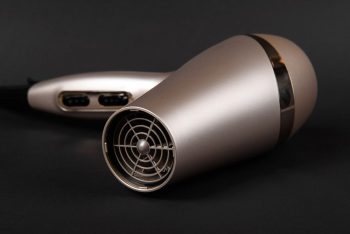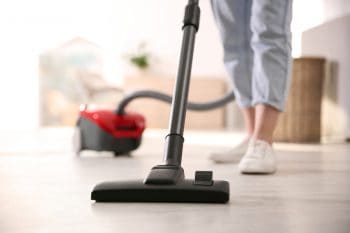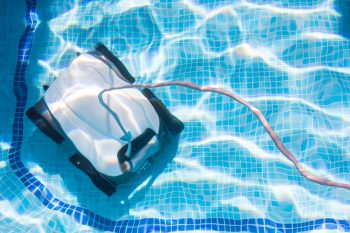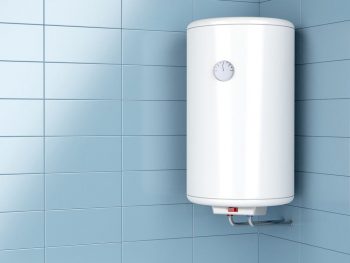
Having a clean, clear pool is every pool owner’s dream. However, the presence of algae can turn this dream into a nightmare. Algae can make your pool water look murky and give your pool surfaces a slimy feel, not to mention the potential health risks. One of the most effective ways to remove algae from your pool is by vacuuming. This article will guide you through the process of removing pool algae by vacuuming, covering everything you need to know in detail.
To remove pool algae by vacuuming, first brush the pool to dislodge the algae. Then, set up your pool vacuum, connect it to the skimmer, and if possible, set your filter to “waste” to expel the vacuumed water and algae directly out of the pool. Vacuum the pool slowly and thoroughly, monitor water levels, and clean the filter frequently. After vacuuming, test and balance the pool water. Regular maintenance, including vacuuming and brushing, can help prevent algae growth.
What Causes Pool Algae?
Before we delve into the removal process, it’s crucial to understand what causes algae in pools. The main causes of pool algae formation include poor water circulation, inadequate filtration, low or inconsistent chlorine levels, and imbalanced pool chemicals. Algae spores can enter the pool through wind, rain, contaminated swimwear, or pool cleaning tools. When conditions such as warm temperatures, sunlight, and the presence of nitrates, phosphates, and carbon dioxide are favorable, algae can bloom rapidly.
Types of Pool Vacuums for Algae Removal
There are several types of pool vacuums that are effective in removing algae from pools. Some of the best options include robotic pool cleaners and handheld pool vacuums. Here are a few top-rated pool vacuums for algae removal:
- Dolphin Nautilus CC Plus: This robotic pool cleaner is highly recommended for algae removal due to its powerful wall climbing capabilities, which allow it to scrub both the floor and walls of the pool, effectively removing algae in the process.
- Polaris P825 Sport Robotic Pool Cleaner: This robotic cleaner is also effective in removing algae, thanks to its brushing capabilities and ability to climb pool walls.
- Poolvio Triangular Pool Vacuum: This vacuum is designed with brushes that help remove algae from the pool surfaces.
- XtremepowerUS Premium Automatic Suction Vacuum: This automatic suction-side pool cleaner is equipped with brushes that help remove algae from the pool surfaces.
- Zodiac MX6 Automatic Suction-Side Pool Cleaner Vacuum: This suction-side pool cleaner is also effective in removing algae due to its brushing capabilities.
Steps to Remove Pool Algae by Vacuuming
To properly set up and use a pool vacuum for algae removal, follow these steps:
- Remove debris: Use a pool net to remove any large debris from the pool before vacuuming.
- Brush the pool: Brush the walls and surfaces of the pool to dislodge algae and allow it to settle at the bottom.
- Set up the vacuum: Attach the vacuum head to a telescopic pole and connect one end of the vacuum hose to the vacuum head’s outlet fitting. Submerge the vacuum head and hose in the pool, filling the hose with water to remove air.
- Connect the vacuum to the skimmer: Locate the skimmer on the side of the pool, remove the skimmer lid and strainer basket, and carefully insert the hose into the skimmer inlet, keeping the open end of the hose submerged. Attach the open end of the hose to the suction port on the skimmer.
- Vacuum to waste (if possible): If your pool has a multiport system or a waste line system, set the filter valve to the “waste” position to bypass the filter and expel the vacuumed water and algae directly out of the pool.
- Vacuum the pool: Move the vacuum head slowly along the bottom of the pool to avoid disturbing the settled algae. Overlap your strokes slightly to ensure thorough cleaning. If the pool is especially dirty, you may need to pause and empty the pump strainer before continuing.
- Monitor water levels: Keep an eye on the water level while vacuuming. If it drops more than six inches below the tile, pause, refill the pool, and continue working.
- Clean the filter: After vacuuming, clean the pool filter to remove any trapped algae particles.
- Test and balance the water: Test the pool water chemistry and add any necessary chemicals to balance it.
By following these steps, you can effectively remove algae from your pool using a vacuum. Regular pool maintenance, including vacuuming, will help prevent algae growth and keep your pool clean and inviting.
Precautions to Take When Vacuuming Pool Algae
When using a pool vacuum to remove algae, you should take the following precautions:
- Kill the algae before vacuuming
- Vacuum slowly and thoroughly
- Use the waste setting
- Monitor water levels
- Clean the filter frequently
- Double shock after vacuuming
- Run the filter until the water clears
Regular Pool Maintenance for Algae Prevention
To keep your pool free from algae, it is recommended to vacuum your pool at least once a week, ideally twice. In addition to vacuuming, it’s important to brush the walls, ladders, and corners of your pool at least twice a week to remove any lurking algae formations. Regular maintenance, including vacuuming and brushing, will help prevent algae growth and keep your pool clean and safe.
In conclusion, vacuuming is an effective method for algae removal in swimming pools, but it should be combined with other treatments and regular maintenance to ensure a clean and algae-free pool. With the right tools, techniques, and regular maintenance, you can keep your pool crystal clear and free from algae all year round.
Frequently Asked Questions
What type of brush should I use to scrub the pool surfaces?
You should use a pool brush specifically designed for your pool’s surface type. For concrete pools, use a brush with stainless steel bristles. For vinyl or fiberglass pools, use a brush with nylon bristles.
How frequently should I clean my pool filter?
It’s recommended to clean your pool filter at least once a month during peak swimming season. However, if you notice your pool is getting dirty faster or the water flow rate is decreasing, it might be a sign you need to clean your filter more often.
Are there any other methods to remove algae from the pool?
Yes, in addition to vacuuming, you can also use algaecides, chlorine shock treatments, and phosphate removers to eliminate algae from your pool. These methods can be used in conjunction with vacuuming for a more comprehensive algae removal.
How can I prevent algae from entering my pool?
You can prevent algae from entering your pool by maintaining proper water chemistry, regularly cleaning your pool and its filter, using an algaecide, and covering your pool when it’s not in use.
Can I use a regular vacuum for pool cleaning?
No, regular vacuums are not designed to handle large volumes of water and can be damaged if used for pool cleaning. Use a vacuum specifically designed for pool cleaning. These are built to withstand water and the chemicals used in pools.











